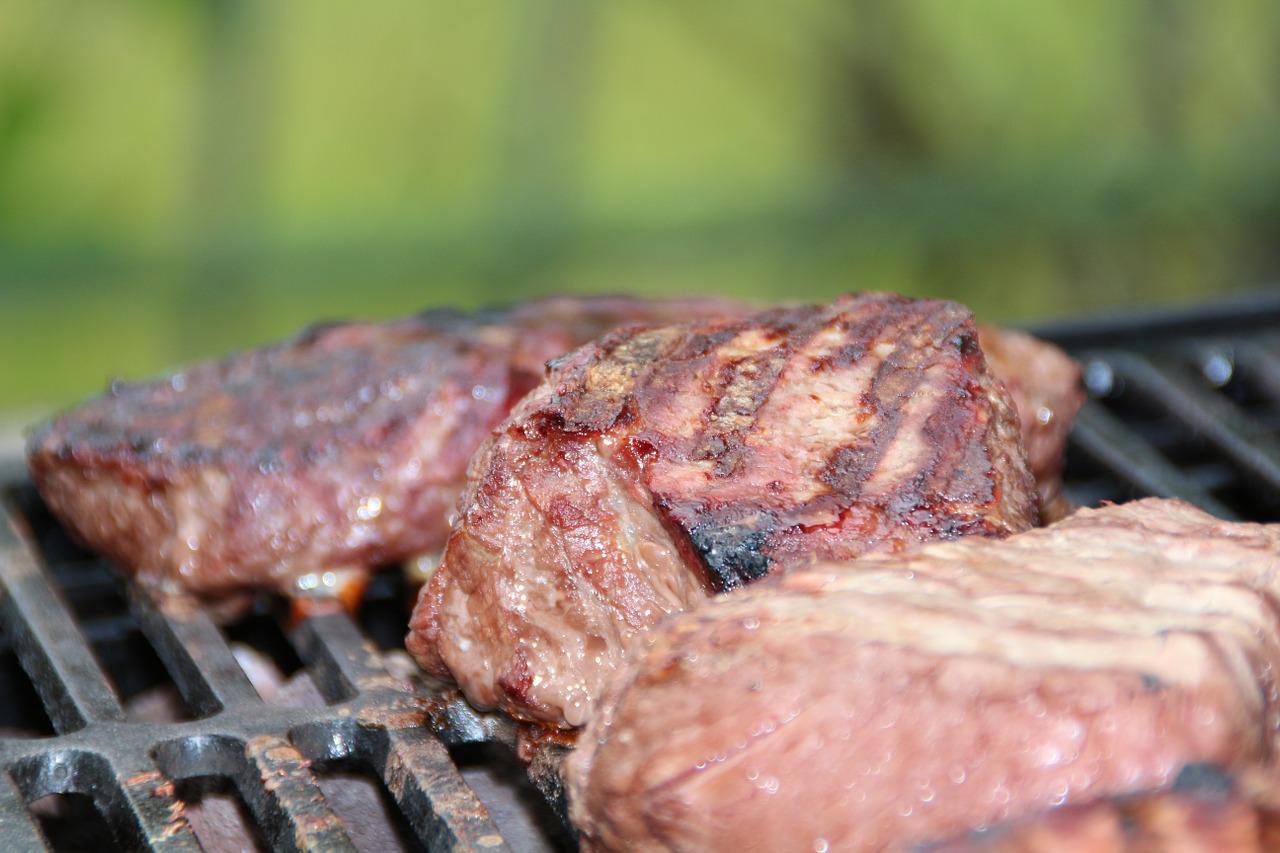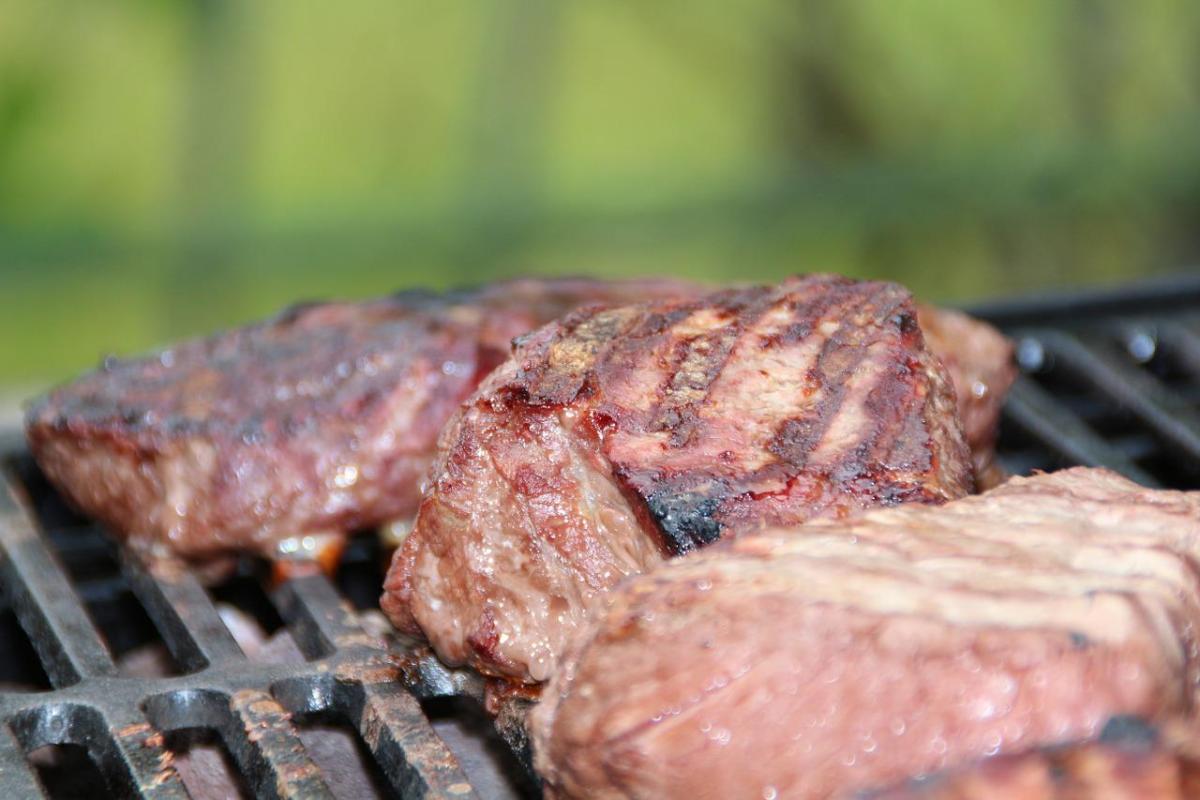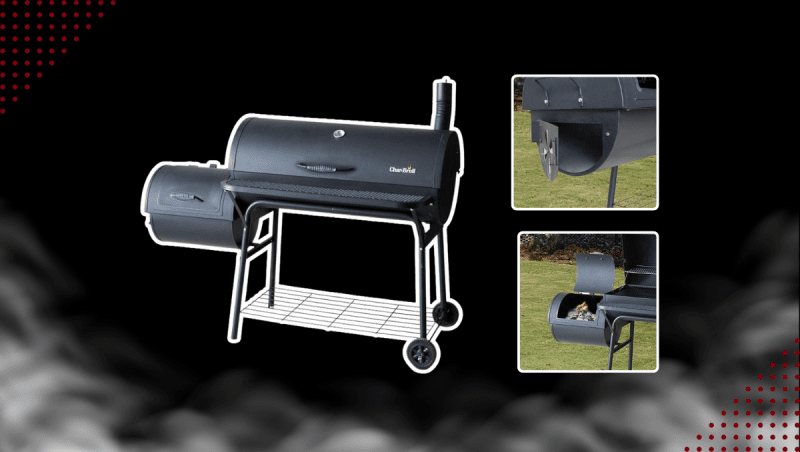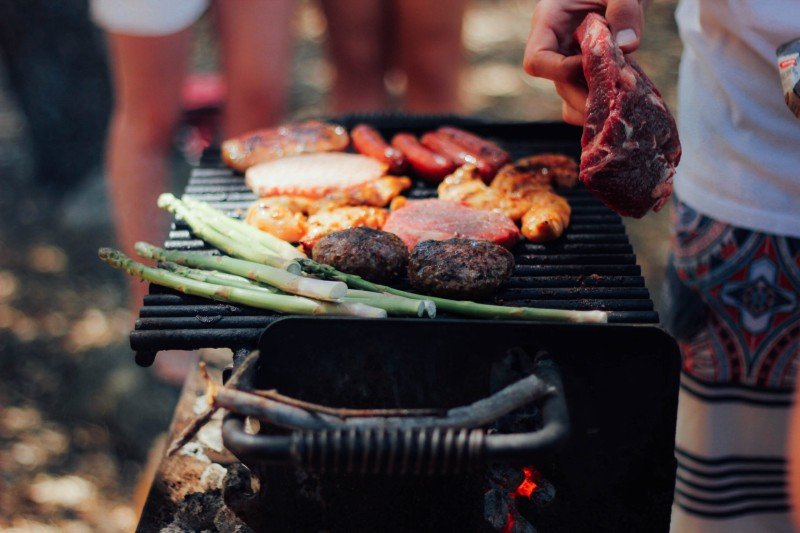When it comes to mastering the art of BBQ, choosing the right meats is essential. Each cut brings its own unique flavor profile and cooking characteristics to the table. To become a BBQ master, it's important to familiarize yourself with the different cuts available. So, let's dive into this essential meat primer.

1. Brisket
Brisket is a staple in the world of BBQ. This cut comes from the lower chest of the cow and is known for its rich, beefy flavor. It's often considered a challenging cut to cook due to its high fat content and connective tissue, but when done right, it results in melt-in-your-mouth, smoky goodness. The two main cuts of brisket are the point and the flat, with the point offering more marbling and tenderness.
2. Ribs
Ribs, oh glorious ribs! Whether you opt for baby back ribs or spare ribs, this BBQ classic is always a crowd-pleaser. Baby back ribs come from the top of the ribcage between the spine and spare ribs, while spare ribs come from the belly area, closer to the sternum. Both cuts are flavorful, but baby back ribs tend to be more tender and leaner, offering a slightly sweeter taste. Spare ribs, on the other hand, have more fat, which enhances their succulence.
3. Pork Shoulder
Pork shoulder, also known as Boston butt or pork butt, is perfect for slow-cooked BBQ. This cut is incredibly versatile, lending itself to pulled pork, shredded pork tacos, or even just a simple pork roast. The shoulder is derived from the upper part of the pig's foreleg, and its marbling of fat ensures an extremely moist and tender result. It's a forgiving cut that offers a mellow pork flavor, making it a popular choice among BBQ enthusiasts.
4. Chicken Thighs
While beef and pork cuts often steal the spotlight in BBQ discussions, let's not forget about the humble chicken thigh. Dark meat lovers rejoice, as chicken thighs are the juiciest and most flavorful part of the bird. With their higher fat content compared to breasts, they are less prone to drying out during the cooking process. Whether you prefer boneless or bone-in, grilling or smoking, chicken thighs are a delicious and affordable option for BBQ masters.
Quality over Quantity: Selecting Prime BBQ Ingredients
When it comes to becoming a BBQ master, the choice of ingredients plays a crucial role in achieving mouthwatering, tender, and flavorsome meats. While it may be tempting to opt for the most economical cuts or purchase in bulk, it's essential to prioritize quality over quantity. Here are some tips to help you choose the right meats for your next BBQ feast.
1. Know Your Cuts
The first step in selecting prime BBQ ingredients is understanding the different cuts of meat. Each cut has its unique characteristics, fat content, and muscle composition, which affects the final result. For example, fattier cuts like brisket or pork shoulder are excellent choices for slow-cooked, low-and-slow BBQ, as the fat slowly renders down and adds rich flavor. On the other hand, leaner cuts like chicken breasts or tenderloin need to be cooked quickly and may require marinades or brines to avoid drying out.
2. Look for Marbling and Freshness
One of the key indicators of quality meat is marbling. Marbling refers to the small veins of fat running through the muscle. A well-marbled cut will have flecks of fat evenly distributed, which enhances tenderness and imparts a delicious taste. When choosing your BBQ meats, look for cuts with prominent marbling as it ensures juiciness and tenderness when cooked. Additionally, always opt for fresh meats from reputable sources, which guarantees both flavor and safety.
3. Consider Sustainable and Ethical Options
While BBQ is all about indulgence, it's important to consider sustainable and ethical options. Today, many farmers and ranchers prioritize responsible practices that promote animal welfare and environmental stewardship. When shopping for BBQ meats, look for labels such as organic, grass-fed, or pasture-raised. These options not only provide a more ethical choice but also contribute to a richer and more authentic flavor profile.

Marbling Matters: Unveiling the Secrets of Tender Barbecue
Choosing the right meats is crucial to achieving tender and flavorful barbecue, and one important factor to consider is marbling. Marbling refers to the white fat that is distributed within the muscle fibers of the meat. While many people might associate a high fat content with unhealthy eating, when it comes to barbecuing, marbling plays a significant role in enhancing the taste and tenderness of the final product.
Marbling is particularly important in cuts of beef, such as brisket, ribeye, and short ribs. The fat within the muscle fibers slowly melts during the cooking process, infusing the meat with rich flavors and preventing it from drying out. A higher degree of marbling generally indicates a higher quality piece of meat, as the fat contributes to a more tender and moist texture.
When selecting meats for barbecue, look for cuts that contain visible white lines of fat throughout the muscle. However, it's important to strike a balance, as too much fat can lead to excessive dripping and flare-ups on the grill. Additionally, marbling isn't only important for beef; it can also enhance the taste and juiciness of other meats like pork or lamb.
From Ribs to Brisket: Exploring BBQ Meats Made Perfect
When it comes to barbecuing, choosing the right meats can make all the difference in achieving that mouthwatering, finger-licking goodness. Whether you're a seasoned pitmaster or a backyard BBQ enthusiast, understanding the characteristics of various meats will help you elevate your grilling game to the next level.
Starting with ribs, they are an all-time favorite amongst BBQ lovers. Baby back ribs, also known as back ribs or loin ribs, are tender and lean, cut from the top of the rib cage between the spine and the spare ribs. St. Louis-style ribs, on the other hand, are meatier and come from the lower part of the rib cage. Ribs are best slow-cooked or smoked to allow the flavors to penetrate the meat, resulting in a juicy and succulent eating experience.
Another popular BBQ meat is pulled pork. This delicacy is typically made from pork shoulder, also called pork butt, which is known for its richness and tenderness. Slow-cooking the pork shoulder over indirect heat for several hours until the meat is fork-tender and easily shreds is the key to achieving that perfect, melt-in-your-mouth pulled pork. Slather it with your favorite BBQ sauce and serve it on a bun for a delightful sandwich that will satisfy any BBQ craving.
Lastly, brisket is considered the holy grail of BBQ meats. This large cut of beef comes from the chest of the cow and requires meticulous preparation and cooking techniques. A fatty beef brisket is best for smoking, as the fat slowly renders, keeping the meat moist and imparting tremendous flavors. Low and slow is the mantra for brisket, with cooking times ranging from 10 to 16 hours. When done right, the result is a tender, smoky, and delectable slab of meat that will have your guests coming back for more.



